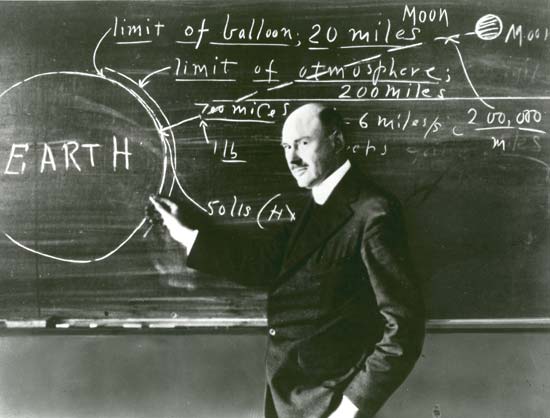90 years ago Robert Goddard launched the world’s first liquid fuel rocket from a cabbage patch on his Aunt Effie’s farm. It reached 40 feet, less than a third the height of the first stage of the three-stage Saturn V booster that brought three men to the moon 40 years later.
I just finished work with NASA Langley on a vision of the next hundred years of aerospace. We’re celebrating the last hundred years of air and space in this Centennial Celebration at NASA and thinking about what the next hundred years will bring us. As always, the Institute for Human and Machine Cognition did a tremendous job hosting the gathering.
Aerospace and Government in 100 Years
If you’re building narratives of space travel in 2117, you should think about how the public sector will (or won’t) support the exploration of space. The future of government was foundational to our NASA program and it led to some of the most interesting discussions. Historians are great at “future of…” programs because they spend their time thinking about 100-200+ year sweeps of history, so an American historian on the team was a great addition to help NASA build possible futures. Boston University historian (and dear friend) Bruce Schulman did an amazing job outlining durable trends that may persist into the next century, and current fracture lines in our nation’s history of trends that will be disrupted. He also (reluctantly) gave some predictions for the next 100 years.
Here’s what Bruce imagines as a possible future, though he pointed out that historians are notoriously bad at predicting the future (think of Lenin’s “end of capitalism” or Fukuyama’s “end of history”):
Two Durable Trends continuing over the next 100 years:
Dr. Schulman imagines the continued rise of direct democracy via popular ballot propositions pushed by the voters as an instrument of governance and constitutional amendment. Opinion-driven propositions originated in the 19th century, doubled from the 70s to the 90s, and doubled again in the last ten years. No end in sight.
A second “durable trend” is the growth of para-state institutions, from the private and voluntary/charitable sectors. The public-private partnership has been the characteristic mode of American governance for 2 centuries and is likely to persist. As Bruce pointed out, while some see US government as “underdeveloped” compared to many Western European democracies, he feels a more accurate term is “other-developed”.
Two Fault Lines for 20th century trends that will not extend for the next 100 years:
Federalism and centralization will continue to be in conflict with popular movements that seek regional autonomy and minority group representation. Think of state-by- state marijuana legalization in the US in defiance of federal law. We face persistent instability to patterns of governance going forward as regional, state and local governments might be playing greater roles and nation-states might even dissolve.
Current anti-globalization movement will grow and drive decentralization of transnational governance. The post-World War II trend to integrate the global management of goods, ideas, capital, software, energy, people and microbes across national boundaries via organizations such as NATO, WHO, IMF and the World Bank, is threatened by growing opposition to globalization. Think of Brexit, Putinism, or President Trump’s revival of the America First idea.
What does this mean for NASA?
When forced to predict, here’s what Dr Schulman said:
We’re unlikely to see large tax-funded public sector efforts in any realm including NASA (except, perhaps, military affairs).
We can expect a persistence of governance by para-state institutions.
As our concepts mature for the next 100 years of space exploration, I’ll be sure to keep you posted. I’m hoping for your thoughts on one topic came up persistently: The future of physical versus virtual presence. Technologies for remote presence are improving at an incredible pace — just play with Oculus Rift or Google Cardboard and you’ll know what I mean — and by 2117 remote presence could be nearly indistinguishable physical presence. So, readers…What are the most compelling reasons to actually bring humans to Mars or Ganymede? Think about this and I’ll keep you informed.
